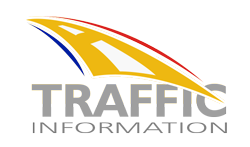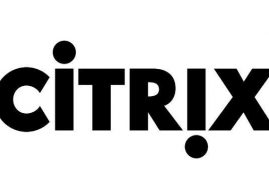What the Novel Coronavirus means for the Gig Economy
OVERVIEW
As the novel coronavirus (COVID-19) pandemic continues to spread around the world, the economic impact is being felt alongside the human impact. Businesses are being forced to either halt or severely curtail their operations, which is having a knock-on effect on the labour market. Among those hardest hit are gig economy workers and the digital economy companies that employ many of them.
With many of us holed up in our homes, heeding calls for physical distancing, we’re scaling back what we spend on many digital economy services – and embracing others.
“There has been an astounding decline in participation on many platforms engaged in the digital economy,” says Jillian Slyfield, Digital Economy practice leader at Aon. “Sheltering at home has meant fewer people needing to take ride shares, wanting to rent vacation properties, riding electric scooters and hiring dog walkers. Yet platform-enabled delivery is thriving. Grocery, prepared food and parcel delivery have all seen increases in addressable market.”
For many gig economy workers facing government lockdown orders to control the pandemic’s spread, the choice is difficult: Lose their income or violate the lockdown and risk getting sick or spreading the virus. Some workers have gone on strike, demanding special compensation and stronger safety precautions. Some governments’ bailout packages include help for these workers.
For gig economy companies, the challenge in the face of the current pandemic is a trifurcated one, according to Slyfield. They must focus on protecting the enterprise, while also protecting the supply – the workers who deliver their services – and the demand – their customers.
When the crisis has passed, it’s likely that the experience – and the steps we took to address it – will permanently change aspects of the way we work, consume and live.
IN DEPTH
There is little in the typical digital economy company’s playbook for adapting to crises such as COVID-19. The global nature of the pandemic has made it nearly impossible for these companies to offset a downturn in one location by pivoting operations to other regions, says Slyfield.
The trifurcated nature of the companies’ exposure complicates the challenge further.
“Companies are concerned about the enterprise, but they’re also concerned about the others making the enterprise’s value proposition work,” says Slyfield. “Ride-share platforms are concerned about drivers and riders. If you are in the home-share business, you’re looking after both guest and host.”
Slyfield is seeing platforms do “zero-participation modeling” to gauge how long their business models can survive if the virus keeps things shut down for 60, 90, or 180 days – or if it makes a seasonal reappearance in the fall.
Sustained revenue loss may hit even harder for those companies that have historically focused on achieving scale over profitability. “Now, if you’re thinking about shuttering your operations, what you’re doing is just reducing your cash burn as much as possible while you have even lower revenue,” says Slyfield.
A DIFFERENT KIND OF CRISIS, A DIFFERENT KIND OF RESPONSE
The current pandemic is a different kind of crisis than what many companies – digital economy or otherwise – have prepared for.
“In most circumstances, the backup plans for other kinds of disasters or catastrophes, such as natural disasters, don’t apply here,” says Slyfield. “So, our clients are rethinking how they might engage or help support their workers.”
Some companies are offering up to 14 days of paid leave to ride-share workers who contract COVID-19 or who are asked to quarantine.
Some ride-share companies are finding ways to support both their drivers and their communities during the crisis, according to Slyfield. Among other things, they are redeploying drivers to do health-care rides, food delivery and even deliver school-prepared meals to underprivileged children, she said.
There are some digital economy platforms that have seen an uptick during the pandemic. Packaged food services – such as cook-at-home kits – are up, Slyfield says. So are services for delivering convenience store items, groceries and parcels.
As people stockpile toilet paper and hand sanitiser, they’re also stocking up on pet food and treats: the pet supply retailer Chewy is hiring thousands of workers to help offset demand.
There has been talking of strikes from some workers who are still being asked to show up to work during this time. Among the disputed issues are demands for increased sanitation of facilities, personal protective equipment and greater transparency into companies’ efforts to keep workers safe from COVID-19. Some workers are also seeking special pay for employees working through the pandemic.
Some companies are still deciding what to call such special compensation. “Labelling additional compensation as ‘hazard pay’ could make the work seem overly dangerous to employees and send the wrong message that the company isn’t looking out for their safety,” says Kelly Voss, a partner in the Rewards Solutions practice at Aon. “At the same time, there is a need to recognise employees for their significant contributions and exposure to inherent risk given this crisis. Increasingly, we see terms like premium pay, shift differential pay or special recognition pay in the market.”
PANDEMIC UNDERSCORES CLASSIFICATION OF GIG ECONOMY WORKERS
As independent contractors rather than employees, gig economy workers lack many of the protections afforded to employees and have been hit hard by the pandemic’s economic fallout.
California’s Assembly Bill 5 (AB5), which took effect in 2020, sought to address some of those issues by redefining the nature of the employer-employee relationship between companies and the independent contractors and freelancers they hire.
The U.S. government’s recently enacted $2 trillion coronavirus relief bill for the first time extends a safety net to U.S. gig economy workers, allowing self-employed workers to qualify for unemployment benefits. The measure also allows some self-employed individuals to gain access to disaster loans for small businesses. In the U.K., with nearly one in six of employed Britons working for themselves, the government’s recent aid package will give 3.8 million self-employed workers access to grants.
When it comes to health insurance coverage, U.S. workers in the digital economy and beyond have experienced financial insecurity due to changes in their employment status and income.
“There are no easy answers right now, but we’ve been encouraging workers across industries facing coverage changes to explore their options,” says Jim Winkler, global chief innovation officer at Aon Health. “We’re suggesting they explore coverage through the Consolidated Omnibus Budget Reconciliation Act (COBRA), look at individual coverage via their state exchange or healthcare.gov and look at Medicaid.”
PANDEMIC EXPERIENCE, RESPONSE MAY RESHAPE THE FUTURE
When the crisis passes, the experience and response will likely change many aspects of our everyday lives.
As business recovers, digital economy companies are likely to benefit from their ability to be more flexible than other industries in certain respects, Slyfield says. “I think this experience has taught digital economy companies where their natural pivot points are and what kinds of other businesses they might employ if their primary function is jeopardised in some way.”
The experience will also likely heighten digital economy companies’ interest in providing some sort of safety net for their workers.
Minimising exposure to the virus may lead to a further reduction in cash transactions and a continuation of no-contact delivery, in which the delivery person leaves deliveries at the door and texts the buyer without face-to-face contact.
“New safety and security measures may continue beyond COVID-19,” says Slyfield. “Is there a reason that someone has to have access to my home, my children and my life just to drop off a pizza? Probably not.”
And the crisis will likely intensify investors’ growing scrutiny of the path to profitability for digital economy companies, making them increasingly wary of start-up companies’ strategies that favour achieving scale before profitability.
“This is a new attitude,” says Slyfield. “We’ve started to see platforms pulling from certain markets if they’re not profitable. That’s a big shift from the traditional focus on scaling at all costs.”
FOR THE DIGITAL ECONOMY, CORONAVIRUS DEMANDS A BROAD RESPONSE
For digital economy companies and companies employing gig workers, the impact of the COVID-19 pandemic demonstrates the need to work across the organisation to protect the enterprise, its point-of-transaction suppliers, service providers and consumers.
“This crisis is a unifying, pervasive force,” says Slyfield. “Enterprises’ risk management and safety teams, looking after the supply-and-demand sides of the equation, are coming together more than ever to provide solutions. We are all rising to the challenge of greater agility, innovation and execution for these business models to persevere.”
Related Posts
« COVID-19 awareness campaign in Eastern Cape Focused on Social Distancing Handover of Water Tanks to Zululand District Municipality »






























